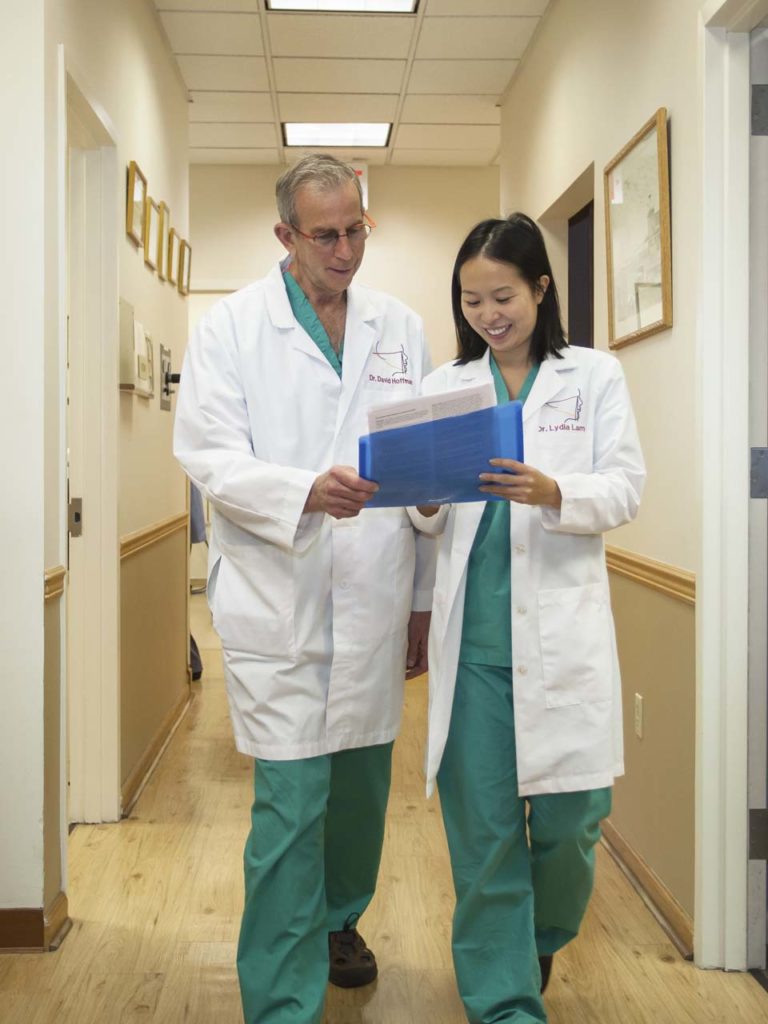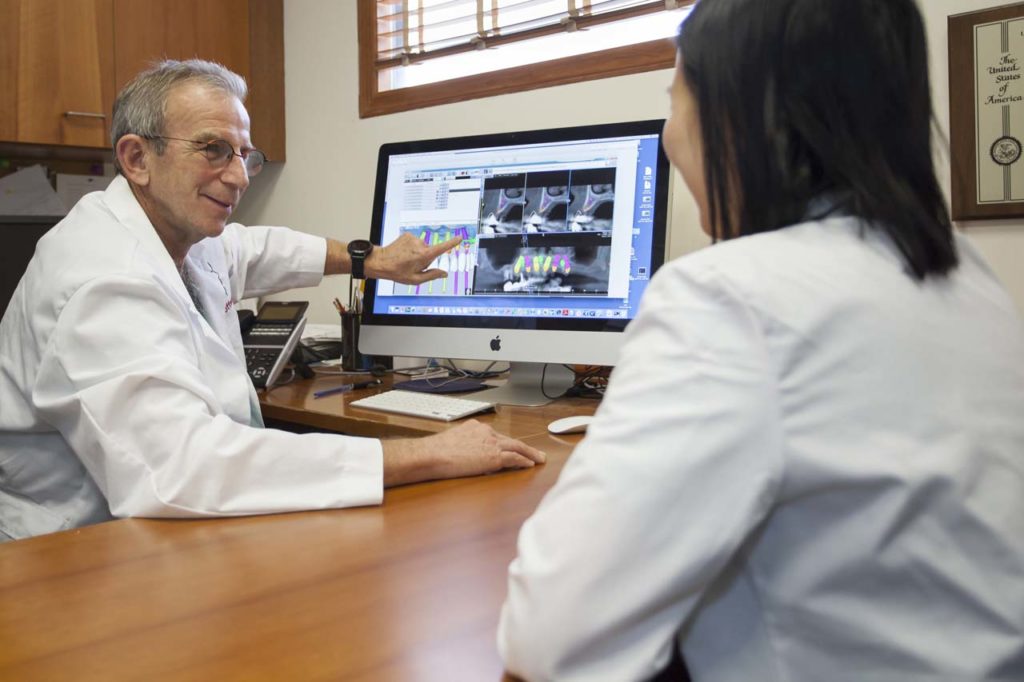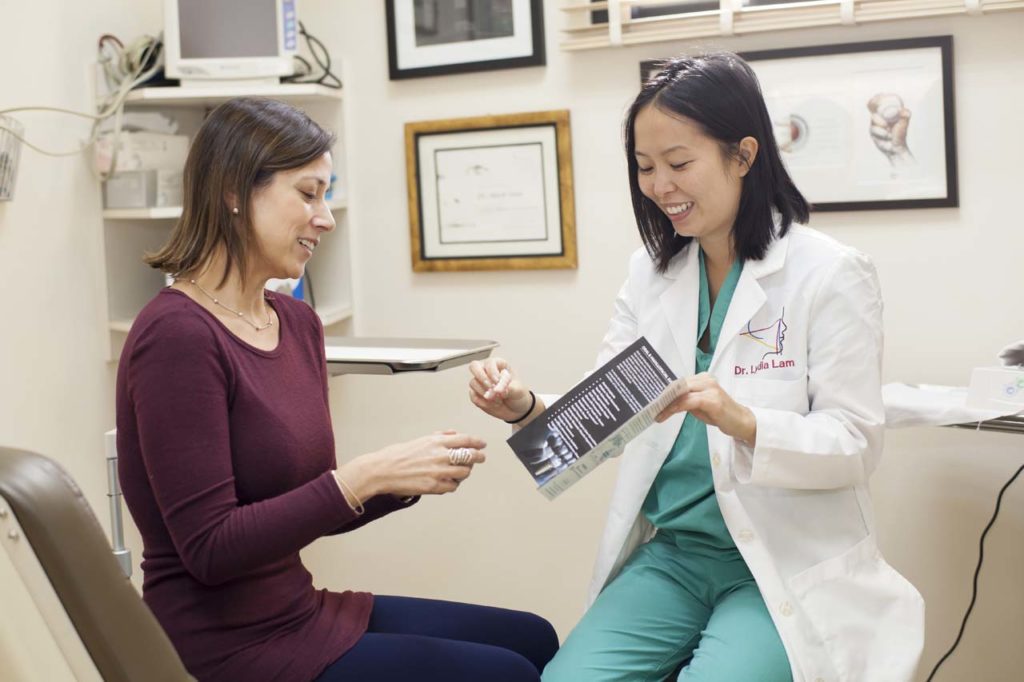A Pioneering Staten Island Oral Surgery Practice Is Blending Art AND Science To Restore Smiles
By Laura D.C. Kolnoski
The enthusiasm of three Staten Island oral surgeons becomes instantly palpable when they discuss how the new technology and state of the art equipment they employ improves life for their patients. At Staten Island Oral Surgery & Maxillofacial Surgery, decades of experience form a foundation for the future of a wide range of procedures. There, Dr. David Hoffman, D.D.S., collaborates with Dr. Mark Stein, D.D.S. and M.D., and Dr. Lydia J. Lam, D.D.S., to bring their patients the most advanced treatments and services. All three are board certified in oral surgery and maxillofacial surgery, and spent five to six years after dental school to become specialized through residency training.

“We have a very active practice that emphasizes today’s high tech world of dentistry,” said Hoffman, who is also the Director of Oral and Maxillofacial Surgery at Staten Island University Hospital. “We stay abreast of all new dental technology to make the patient experience more precise, comfortable, and efficient.”
Patients marvel at the practice’s new Cone Beam CT Scanner, for example. The device allows a patient to step inside an open machine that moves around their heads taking images. Introduced in the United States in the early 2000s, the system rotates around the patient, capturing data using a cone shaped X-ray beam. That data is used to construct a three dimensional (3D) image of the patient’s upper anatomy.
“We invested in all new equipment because we can use the information in various ways,” said Lam, adding that the technology provides a fast, noninvasive way of answering various clinical questions to help with the diagnosis, treatment planning, and evaluation of a range of conditions.
“It’s a total different technology that allows the creation of multiple pictures of the jaw, teeth, and face,” Hoffman said. “Our goal is to recreate a virtual patient so we can see the bones, face, and more, all blended together, to plan the patient’s implants. We can take all this information and use a 3D printer to place dental implants into position. We create a patient in a virtual world and bring that back to the patient.”
Also improving treatment experiences is the wireless TRIOS Digital Scanner, which looks a bit like a Star Trek phaser. The TRIOS, which runs on rechargeable batteries, makes scanning fast and easy, ensuring optimal comfort, increased accuracy, and reduced chair time. The tool creates high quality digital impressions in lifelike colors to evaluate treatment and facilitate dialogue.

“The TRIOS scanner replaces taking impressions in the mouth and generates a digital image of the teeth and oral cavity that is as accurate as a traditional impression, and allows us to use this information in the digital world or treatment planning phase,” Hoffman said. “To do virtual surgery, we need to combine the two scanners, cone beam and TRIOS, to enter the digital world.”
“Virtual surgical planning and streamlined digital workflow means more accurate planning, more accuracy during treatments, and better, longer lasting results,” said Lam. Anyone who has had a crown made the “old fashioned way” will happily note that the distasteful putty placed in the mouth to create the crown has become a thing of the past. Instead, the scanner takes multiple pictures and turns them into a usable digital image.
A dramatic example of this beneficial new science involves the case of Jannet, a 12 year old girl from Gambia with a severe facial deformity. A benign tumor on her jawbone kept her from eating, going to school, or leading a normal life. After working with international organizations to get the girl to the United States, the doctors, leading a specialized surgical team, eventually changed Jannet’s appearance and life for the better. Every step was undertaken on a computer, providing a method to reconstruct the lower jaw with a graft from her leg bone. The tumor was removed, her life was saved, and her smiling face can be seen on the practice’s website.

Increasingly appealing to patients are the latest leading edge techniques in dental implant procedures the Teeth in a Day/All on 4 method, in which teeth are removed, implants placed, and the patient can leave with new teeth the same day. Hoffman calls the method “a game changer.”
“We use a special lab in Reno, Nevada, which enables us to precisely match the teeth to both the patient’s available bone and the shape of their face and lips, creating aesthetically pleasing results,” he explained. “We can now employ all this new technology to create a series of pictures so we can do the procedure in a matter of hours. We can pre plan it all from start to finish on a computer before we even begin. Everything is custom made.”
The long lasting implants can replace all of a patient’s upper and/or lower teeth, and surgery and post procedure care is shorter and easier. The implants look, feel, and function like natural teeth, and patients can return to work the next day. Said Hoffman, “This type of surgery is different from routine oral surgery in that our patients are often at their wit’s end, scared, or have faint teeth in spite of dental care.”
“Unlike dentures, Teeth in a Day is a permanent missing tooth solution,” added Lam. “Patients who were not candidates for implants due to inadequate bone density may also be able to receive Teeth in a Day.” She explained that the technology can also be used in reconstruction, rehabilitation, cancer, and tumor cases, as well as in corrective jaw surgery for skeletal deformities, overbites, under bites, and other conditions.
“We can now show what the patient will look like afterwards on a computer,” Lam said. “Our patients tell us that Teeth in a Day and All on 4 changes their lives.”
“There has been considerable progress in dentistry in recent years, along with a shift in philosophy,” Hoffman said. “Thanks to these innovations, we can achieve substantial results with less downtime than ever before.” The self esteem component cannot be over looked, he added, pointing out that people with dental issues tend to cover their smiles or not smile at all.
“Quality of life is adversely affected,” Lam said. “When teeth are replaced, the whole facial appearance changes. To be able to give someone a full set of teeth boosts their confidence and is tremendously gratifying.” Patients of Staten Island Oral Surgery & Maxillofacial Surgery are eager to share their individual stories.
“It was a great experience; they made me feel comfortable,” said one, while another offered that “Five stars aren’t enough to describe my experience. I would recommend this office to everyone.” Yet another patient stated he’d had no pain during or after his procedure, and a further referred to Lam as “a gem,” who addressed all her questions and concerns before and after her procedure.

“I’ve had my choice of picking residents over the years, and I picked Doctors Lam and Stein,” Hoffman said. “It’s easy to promote the practice because I have two great doctors.”
Staten Island Oral Surgery & Maxillofacial Surgery
256 Mason Ave. / 718.226.1251 / statenislandoralsurgery.com


